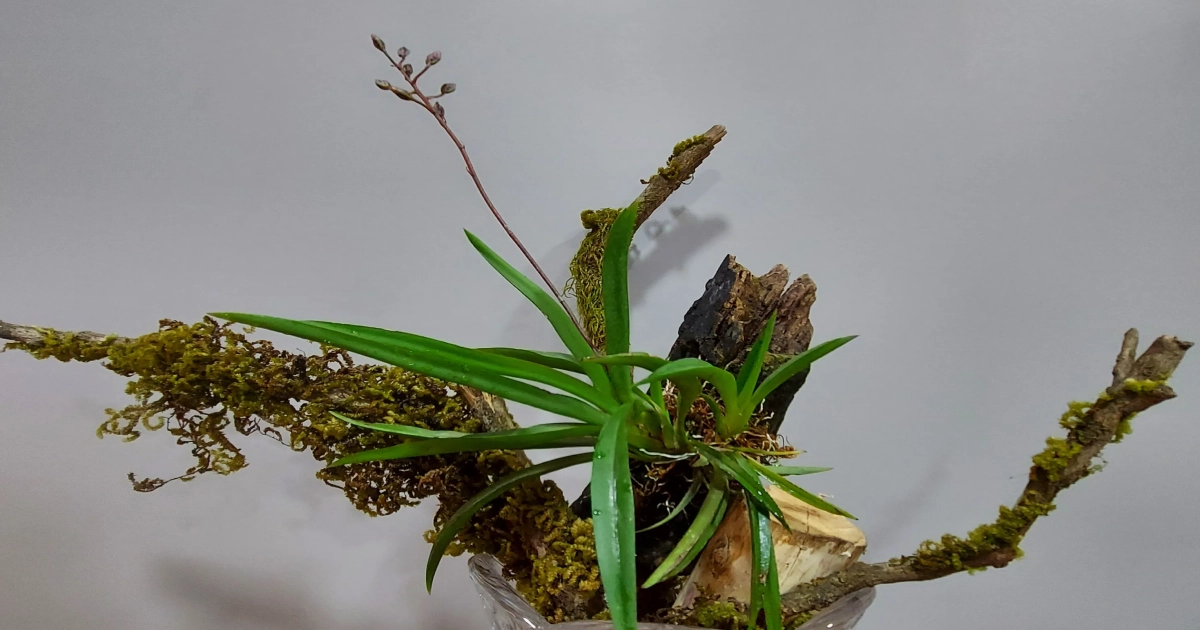Miniature orchids of the Tolumnia species, commonly referred to as Equitant Oncidiums, are indigenous to the Caribbean and Central America.
Light
Bright, filtered light is preferred for tolumnia orchids. Place them close to an east or west-facing window so they may get a few hours of bright sunlight each day. Keep them away from harsh, direct sunlight, though, as that might burn the leaves.
Water
These orchids prefer a continuous damp environment that is not soggy. Depending on the humidity in your house, water them once or twice a week. Between waterings, the potting mix must be allowed to gradually dry out, but not totally.
Humidity
An ideal humidity range for tolumnia orchids is between 60 and 70%. If the air in your home is very dry, you might want to use a humidifier or put a tray of water close to the plant to increase the humidity.
Growing Medium
Tolumnia orchids prefer a potting soil that drains well and holds moisture without becoming soggy. For these orchids, a combination of bark, sphagnum moss, and perlite works nicely.
Plant food
Use a balanced, water-soluble fertilizer that has been diluted to half strength to fertilize your Tolumnia orchids on a regular basis. Feed them weekly throughout the dormant season and every two weeks during the growing season.
Repotting
Every two to three years, or whenever the potting soil has deteriorated and become compacted, repot your Tolumnia orchids. Make sure to use a well-draining potting mix and select a pot that is marginally larger than the one you previously used.
Circulation of Air
Place your tolumnia orchids in an area of your house that gets plenty of airflow because they prefer it. This will assist maintain the plant healthy and stop fungal growth.
Pruning
After they have completed blooming, prune your Tolumnia orchids by removing the flower spikes from the plant’s base. The plant will be encouraged to develop new growth and a fresh batch of blooms as a result.
Propagation
Keikis, or baby plants, which develop at the parent plant’s base are a source of tolumnia orchids. The keikis can be carefully removed once their roots have grown and potted up in their own containers.
Diseases and Pests
Although tolumnia orchids are generally resistant to pests and diseases, they can become infected with fungi if kept in overly wet or humid environments. To lower the possibility of fungus infections, keep the potting mix well-drained and abstain from overwatering.
In conclusion, Tolumnia orchids require minimal maintenance and can provide a magnificent display of blossoms for many years to come with a little care. You’ll be rewarded with an abundance of lovely blossoms if you remember to give them bright, filtered light, a well-draining potting mix, high humidity, and regular fertilizer.
 en.bdview24.com – News Portal from Bangladesh. Bangla News from Bangladesh regarding politics, business, lifestyle, culture, sports, crime. bdview24 send you all Bangla News through the day.
en.bdview24.com – News Portal from Bangladesh. Bangla News from Bangladesh regarding politics, business, lifestyle, culture, sports, crime. bdview24 send you all Bangla News through the day.
